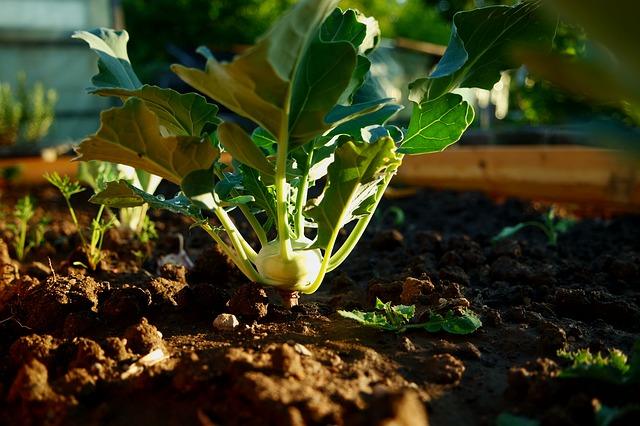The days are getting longer, snow is disappearing from the garden and the air is rapidly getting warmer. You’ve spent your dreary, winter days planning this year’s garden. Are you feeling the gardening “itch” yet? If you haven’t chosen which vegetables yet to grace your garden this year, here are five hardy vegetables you can sow outside soon – if not right now.
The soil may still be a bit hard, but if it is workable, then dig and add a layer of compost or manure to the garden. This doesn’t mean scrape the ice and snow off if there is any still there. If you still have snow and ice on your garden, you will need to wait a bit.
If all is well, then begin planting. Remove any weeds and other plant debris you may find. If you are planning to plant any produce that requires stakes or supports, add the supports now. Place a cover over your garden to help protect and warm up the soil before planting.
Check for any pests, especially slugs, as the weather continues to warm up during the month.
Need Non-GMO Heirloom Seeds For Your Spring Garden? The Best Deals Are Right Here!
If you want to try something new, raised garden beds save your back from the hard work of bending to till and dig. These beds heat up quicker than traditional gardens in the springtime, but they still need to have good soil and drain well.
Ready to plant?
Here are five popular and healthy choices for your March planting. They are all hardy, and can be planted outside to enjoy during the spring and summer.
1. Spinach. This cool-weather plant can take about six weeks to grow from seed. All you need to do is loosen the soil before planting. You also can prepare the soil for this vegetable in the autumn if you want to save time in the spring. Spinach likes moist soil, but not soggy. When the plants start to grow, you will need to thin them to prevent overcrowding – a big “no-no” with spinach. You’ll need to buy fresh seeds every year, as spinach seeds don’t seem to store well. This green vegetable is full of vitamins and can be used for salads, main dishes and cooking.
2. Leeks. Here is another tough, hardy vegetable you can plant now. Leeks need well-drained soil with organic matter to protect and boost health. They like a sunny, yet sheltered spot. Planting now will allow you to harvest leeks at the same time as you do onions. You will need to break up the soil before planting and the seeds need to be spaced about an inch apart (one to two centimeters.)
3. Turnips. Known as a root-vegetable, turnips are easy to grow. They are full of nourishment, with many minerals and carbohydrates. Turnips grow well in cool, moist soil, and they mature in about six to 10 weeks. You don’t need too many seeds. Plant them by sparsely sprinkling the seeds in a row. Cover with a thin layer of dirt and add a little fertilizer before watering. Turnips should sprout within a week. Water during any dry weather. You can harvest turnips when they are about the size of a golf ball.
This New All-Natural Fertilizer Doubles Garden Production!
4. Spring onions. This type of onion should be planted in a part of the garden that isn’t waterlogged or still frozen. Pick a spot in the garden that gets a good amount of sun and break up the soil. Rows should be shallow, and you simply drop the seeds into the rows. Add some sort of fertilizer to give plants a boost. By planting spring onions now, you will get a crop in June and July. They can be enjoyed raw or in salads. You can even use them as a substitute for other onions.
5. Kohl Rabi. Here is a fun-looking, hardy vegetable that seems to thrive in cool temperatures. Kohl Rabi grows well in temperatures of 40-75 degrees Fahrenheit, or 4-23 degrees Celsius. It needs 45-60 days to fully mature. Kohl Rabi likes full sun and handles frost well. You will want to plant this vegetable half an inch (one and a half centimeters) deep, in a thin row until plants are five to eight inches apart. The soil needs to be moist. Use compost on the garden bed. You’ll notice Kohl Rabi is sweeter than cabbage. It stores very well in the refrigerator for one week, or up to two months in a cool place.
There are so many other vegetables you can enjoy as well. Choose your seeds, wake up your garden and get planting.
What vegetables would you add to this list? Share your thoughts in the section below:
Every Spring, Gardeners Make This Avoidable Mistake — But You Don’t Have To. Read More Here.
 Off The Grid News Better Ideas For Off The Grid Living
Off The Grid News Better Ideas For Off The Grid Living





